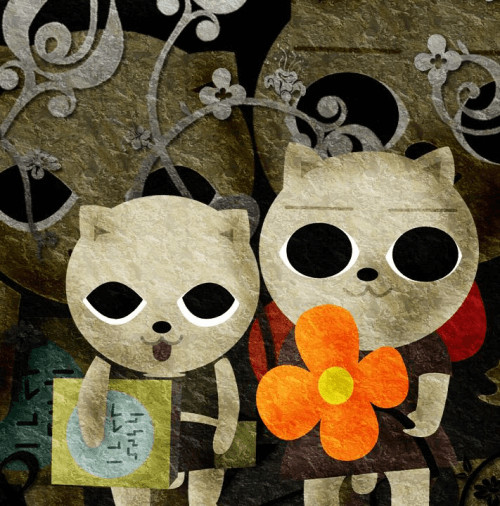 Cat Soup
Cat Soup
Do you remember Cat Soup? If not, it’s time to rediscover this largely forgotten yet profoundly impactful anime movie from over two decades ago. Let’s delve into an in-depth exploration of this unique and often unsettling work.
Cat Soup, originally known as Nekojiru Sou, draws its inspiration from the darkly humorous and often disturbing Nekojiru manga series. These manga typically revolve around feline characters who embody mischievous and sometimes outright cruel behavior. Unlike typical cute cat portrayals, Nekojiru’s cats are often depicted as bullies, engaging in nasty acts and terrorizing others seemingly for their own amusement. While I haven’t personally explored the manga extensively, I have encountered the short anime adaptation, Nekojiru Gekijou Jirujiru Original. Frankly, it’s not a pleasant experience. It showcases these unpleasant cats performing unpleasant deeds, frequently lacking any clear moral or redemptive arc. The narratives are characterized by a mean-spirited and even vile tone, which, arguably, is precisely the intended effect.
However, our focus here is not on standard Nekojiru adaptations, but specifically on Cat Soup. This 2001 production by J.C. STAFF, directed by Tatsuo Sato, serves as a commemorative project, imbued with a distinct artistic vision. While Tatsuo Sato might not be the most globally recognized name associated with the project, his filmography includes works like Madan no Ou to Vanadis and episodes of Mouretsu Pirates, neither of which particularly stood out. He also contributed to Argevollen, which, for me, was largely forgettable. Yet, Sato also directed Shigofumi, a genuinely compelling and daring anime showcasing directorial skill and vision. It remains a puzzle why his other projects don’t reflect the same level of talent or stylistic flair. It’s reminiscent of the director of Boogiepop Phantom, whose subsequent work didn’t always reach the same heights.
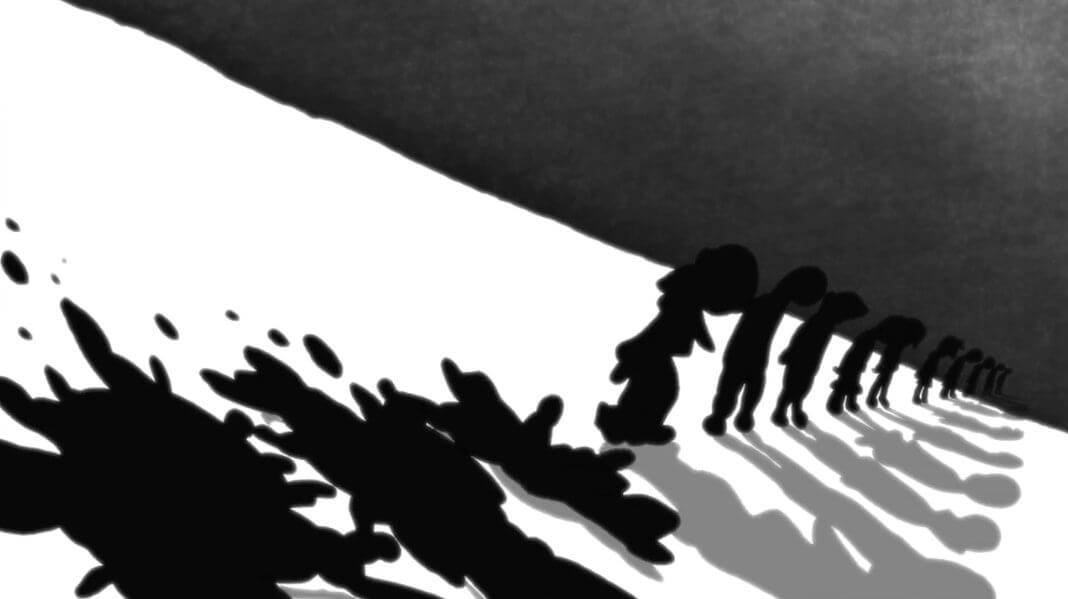 Cat Soup Yuasa Kaiba
Cat Soup Yuasa Kaiba
However, Cat Soup’s creative force extends beyond Tatsuo Sato. A more prominent figure linked to this anime is Masaaki Yuasa, who served as the storyboard artist. Yuasa, the acclaimed director behind Ping Pong the Animation, Devilman Crybaby, Kemonozume, The Tatami Galaxy, and Kaiba, needs little introduction to anime enthusiasts. His prolific output spans adaptations, reimaginations, and original works, earning him widespread acclaim for his distinctive and innovative style. While Yuasa’s involvement in Cat Soup is undeniable, attributing the film solely to his vision would be speculative. Despite claims suggesting Sato ceded creative control to Yuasa, thorough research of interviews has not substantiated such statements. Therefore, to avoid conjecture, it’s more accurate to acknowledge both Sato and Yuasa’s significant roles in shaping Cat Soup’s scenario, as credited by sources like Anime News Network (ANN).
The final, crucial auteur influence to consider is that of the original author, Nekojiru, whose real name was Chiyomi Hashiguchi. Nekojiru remains an enigmatic figure, and one can’t help but wonder about the personality behind such peculiar and often unsettling stories. Tragically, Nekojiru died by suicide, a detail that profoundly informs the understanding of Cat Soup. It’s almost impossible to separate the film from the context of its creator’s life and worldview, suggesting the filmmakers likely crafted Cat Soup with Nekojiru’s spirit in mind. So, what underlying message or meaning does Cat Soup convey? Let’s explore its depths.
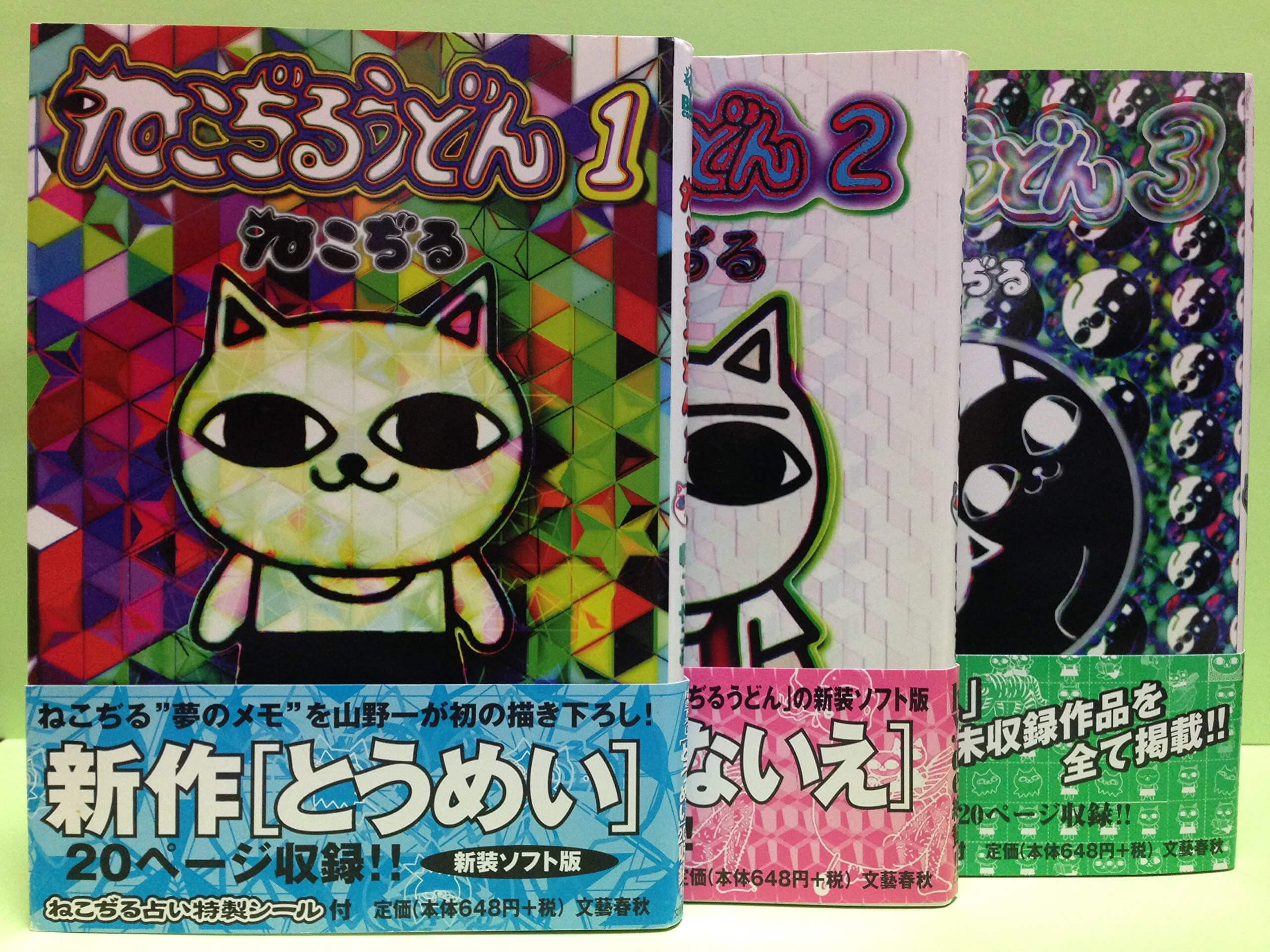 Cat Soup Nekojiru Udon
Cat Soup Nekojiru Udon
Decoding the Meaning of Cat Soup: A Journey into Surrealism and Nihilism
Before proceeding, be warned: spoiler territory lies ahead. If you haven’t experienced Cat Soup, it’s highly recommended to watch this short, atmospheric, and artistically rich film first. This analysis is intended to provide clarity and deeper understanding rather than serve as a conventional review.
Cat Soup primarily follows the journey of two cat siblings: Nyako, the older sister, and Nyatta, her younger brother. Nyako seemingly falls into a coma due to a fever, while Nyatta may have experienced a near-drowning incident, perhaps explaining his parents’ subsequent detachment from him. In a dreamlike state, Nyatta witnesses his sister being led away by a figure resembling the Grim Reaper. In a bizarrely comedic struggle, they wrestle for Nyako’s soul, with Nyatta only managing to retrieve a fragment. Awakening in his bathtub, Nyatta returns to his family, only to discover Nyako has indeed passed away. However, Nyatta inserts the piece of soul back into her body, miraculously bringing her back to consciousness. Yet, with a portion of her soul missing, Nyako exists in a diminished state, almost devoid of volition. Driven by this unsettling outcome, Nyatta embarks on a surreal journey with Nyako, a quest to reclaim what was lost, a poignant and disturbing exploration of life and death’s seeming insignificance in the face of absurd, meaningless events.
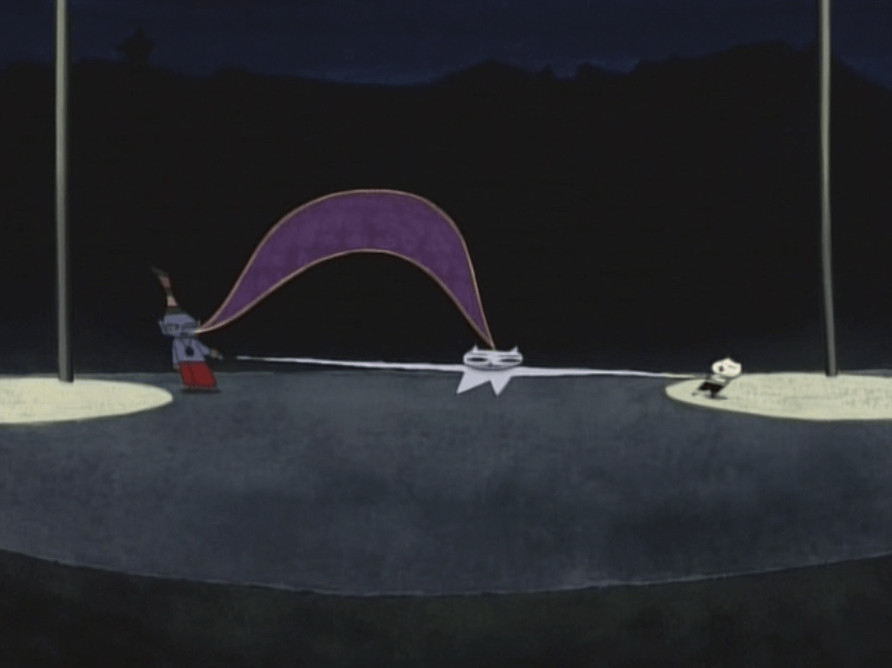 Cat Soup Afterlife
Cat Soup Afterlife
As previously mentioned, Cat Soup embraces cynicism and a certain “evil” undercurrent. Beyond the surface-level antics of mischievous cats, the anime is rich in symbolism and thematic depth, despite director Sato’s partial disavowal of intentional meaning. The overarching leitmotif is the futility of existence, the suggestion that life and death in Cat Soup are stripped of inherent significance. In fact, the narrative implies that events unfold randomly, devoid of fate, grand design, or profound purpose. This pervasive nihilistic nuance, this sense of ultimate futility, forms the core of this analysis. Let’s examine key moments that illustrate this theme.
- The Gossiping Neighbors: As Nyatta races to save his sister’s soul from death, he encounters three elderly women engaged in idle chatter, seemingly oblivious to the gravity of existence. This is satirized through sped-up, distorted voices, caricaturing the stereotypical nosy neighborhood women often found in anime (Paranoia Agent notably explored this trope). These figures, focused on unproductive gossip, are depicted as hollow. Nyatta pulls a plug attached to one, causing her to deflate like a balloon, leaving behind only her skin. The analogy is stark: those who prioritize malicious gossip over meaningful action are internally empty. The remaining two women briefly pause, but quickly resume their vapid conversation, highlighting the insignificance of individual lives amidst the relentless flow of trivial chatter.
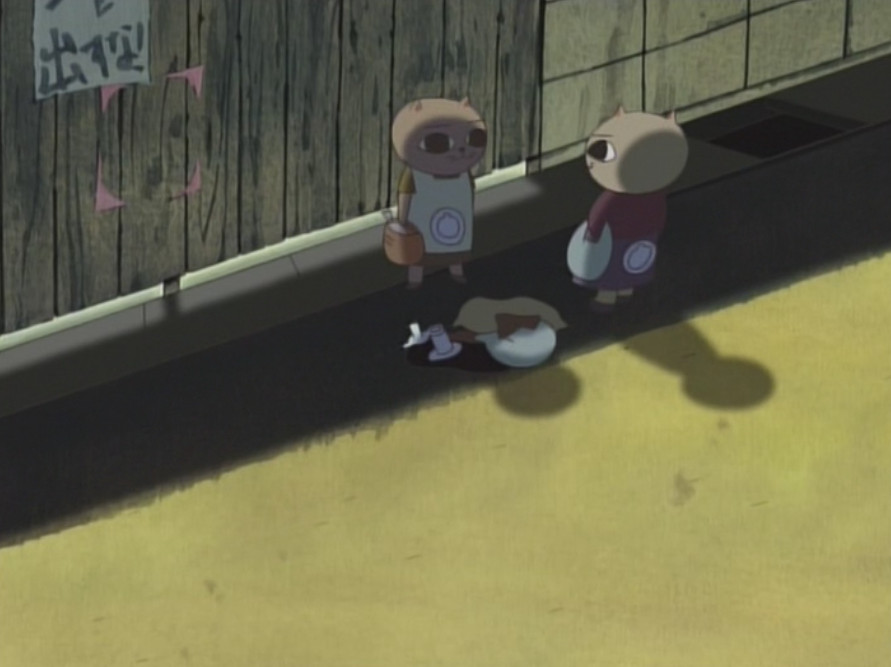 Cat Soup Neighbours
Cat Soup Neighbours
-
The Circus of the Absurd: The opening circus scene immediately establishes the devaluation of life and death. A “God” figure enters the stage and casually “kills” a woman as part of his act. Through “magic,” her dismembered body parts are theatrically juggled before being reassembled, restoring her to life. Concepts typically considered sacred are reduced to mere performance. Life and death are toys for amusement, manipulated with a snap of the fingers. Life, in this context, is just a meaningless circus act.
-
Creation as Spectacle: Continuing the circus theme, creation itself is trivialized. God is instructed to create objects—a chair, a golden elephant—and obliges without ceremony. These creations are born from whim, devoid of deeper purpose. This directly contrasts with the common perception of creation as a sacred, mystified process imbued with profound meaning.
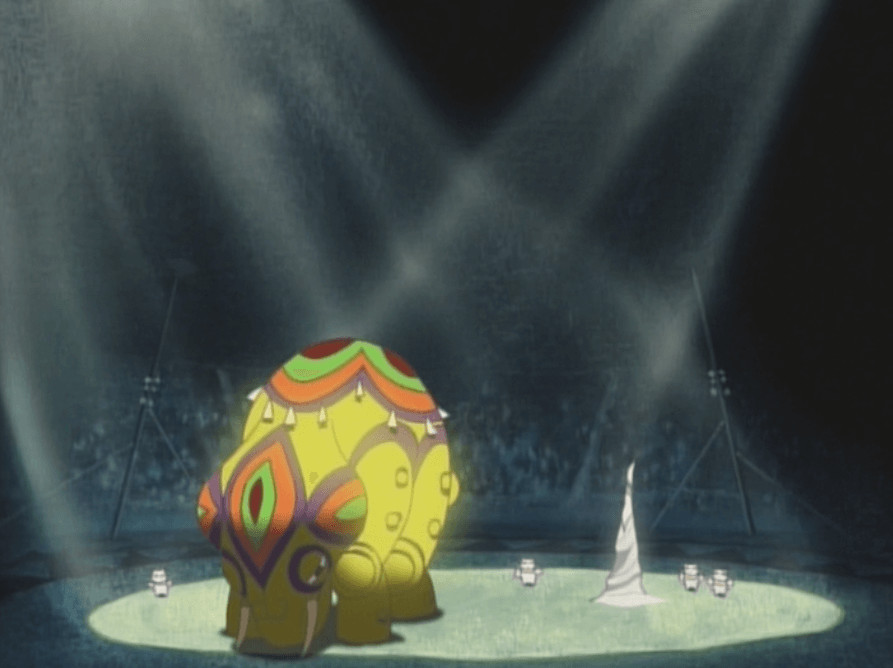 Cat Soup Elephant
Cat Soup Elephant
-
The Deluge and the Ark: Due to a circus mishap, the world is flooded (water, significantly, reappears frequently throughout the story, possibly echoing Nyatta’s near-drowning). The protagonists find themselves adrift in a boat, a clear Noah’s Ark reference, even featuring the pig character Butaro, perhaps representing the animals saved from the flood.
-
The Fish and Futility: The fish sequence is a powerful embodiment of futility. The cats catch a fish, which desperately tries to escape death. A surreal montage ensues, depicting the fish being sliced apart by samurai swords (a metaphor for the cat’s knife). Despite its valiant struggle and escape, accompanied by soaring, cathartic music, the fish is ultimately washed ashore, dead. A cat then finds it, casually gouges out its eye, and eats it. The fish’s heroic effort amounts to nothing, succumbing to a cynical fate beyond its control. This foreshadows the overarching theme of the narrative.
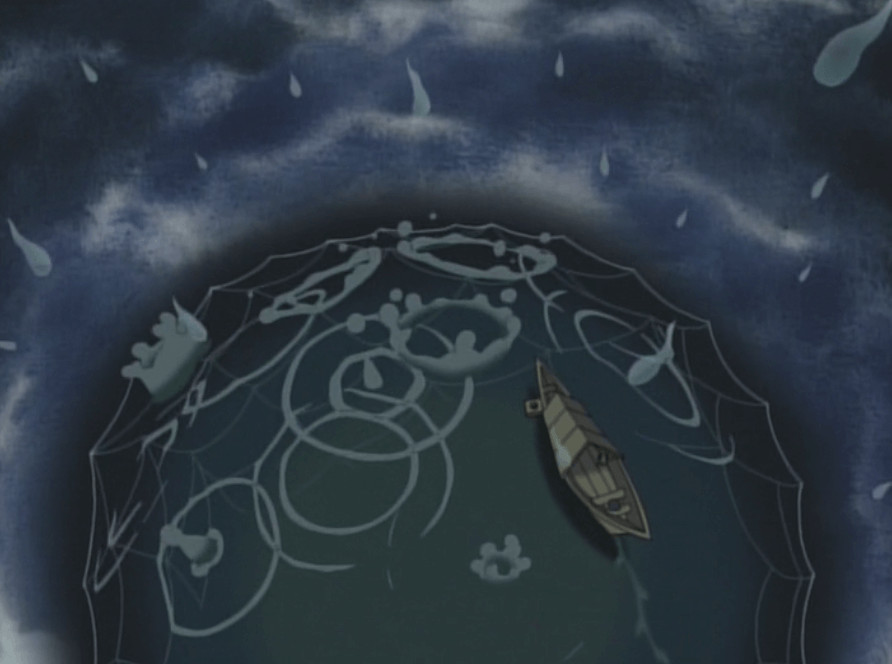 Cat Soup Ship
Cat Soup Ship
-
Butaro’s Suffering: Butaro, the pig, becomes a victim of the cats’ casual cruelty, serving as a food source as they slice off pieces of his flesh to eat (he even engages in self-cannibalization). He’s then exploited as a slave for transportation until he collapses and is brutally beaten. The cats show no empathy, further highlighting the pervasive lack of compassion and meaning.
-
The Corpse-Composing Doctor: The cats encounter a doctor who, rather than healing, indulges in the macabre hobby of assembling corpses, arbitrarily combining body parts with no regard for the sanctity of life. Life, again, is treated with utter disrespect.
-
Hansel and Gretel Reimagined: Near starvation, the siblings stumble upon a seemingly benevolent man who offers them lavish food, albeit in gruesome ways. He serves a live bird, drenched in oil and roasted alive by flying it through a candle flame. He continues to feed them in a Hansel and Gretel-esque manner (even offering a house made of sweets, drenched in chocolate), culminating in his intention to boil them. The cruelty is gratuitous; killing for food isn’t the point, but rather the infliction of suffering, further diminishing the value of life and death.
 Cat Soup Hansel and Gretel
Cat Soup Hansel and Gretel
-
God’s Dinner and Time’s Rewind: God reappears, accidentally dropping a planet-fragment into the “wheels of time.” To retrieve his “dinner,” he spins the wheels back and forth, causing chaotic temporal distortions. This results in darkly comedic scenes of people “undying” as time briefly reverses: a woman about to be hit by a car, people falling to their deaths suddenly floating back upwards. Natural disasters, accidents, assassinations are casually undone because of God’s dinner mishap. This scene underscores the triviality of life and death on a cosmic scale. Finally, we see God’s next meal: planet Earth itself. Humanity, and perhaps all life on Earth, is reduced to a mere appetizer.
-
The Static End: The cats return home, Nyako’s soul seemingly restored. A happy family scene unfolds, but the peace is fleeting. As Nyatta goes to the bathroom, the parents vanish as if a TV is switched off. Then the TV itself turns off, followed by Nyako, and finally, the entire world dissolves into static. God has finished his meal; Earth’s chapter is closed, along with the fates of Nyatta and his family. This is the ultimate expression of futility, rendering all prior struggles meaningless.
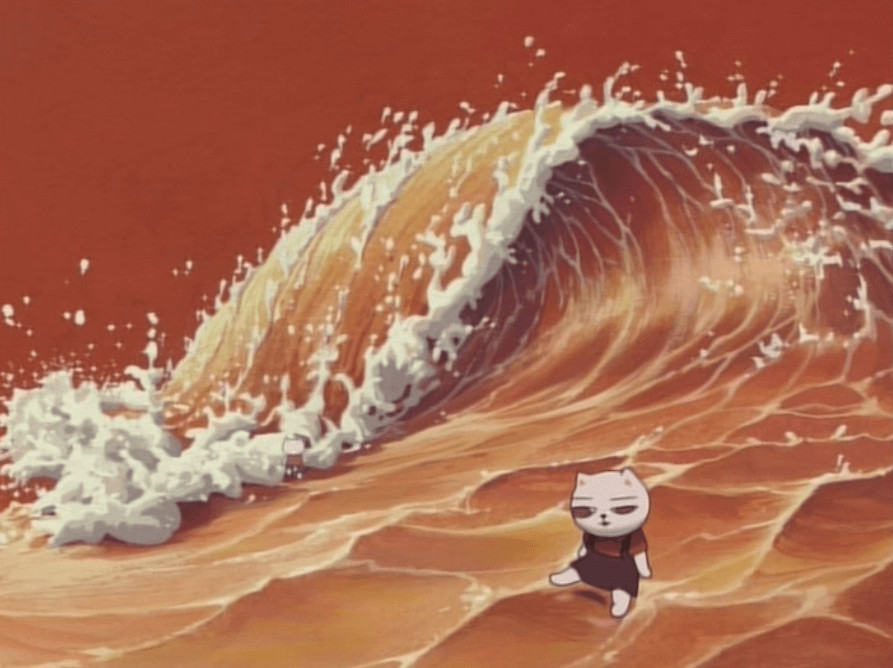 Cat Soup Time Stuck
Cat Soup Time Stuck
Is Cat Soup a Dream? Symbolism and Interpretation
Cat Soup resists straightforward interpretations, inviting multiple readings. One compelling theory is that Nyatta never truly revived after his near-drowning. The entire bizarre journey could be his dying hallucination, explaining the surrealism that sharply contrasts with the grounded opening scenes. The recurring motif of water strengthens this interpretation. The global flood, the water elephant, the fish story, the near-boiling incident, the solidified tear, the Red Sea imagery during time-freeze, and their return home by boat – water is omnipresent. It’s more than just random imagery; it’s a potential symbol of Nyatta’s drowning experience. The TV turning off and the world disappearing could represent the subjective nature of reality, echoing the philosophical idea that “the world ends with you” – consciousness ceasing to exist at death.
Ultimately, the specific interpretation may be secondary to the overarching message. Nyatta’s efforts are futile, culminating in the worst possible outcome. Their journey, and perhaps all endeavors, are rendered meaningless. Are we all, then, merely dancing in the palm of some indifferent cosmic being, oblivious to our own insignificance as random, terrible events unfold without reason?
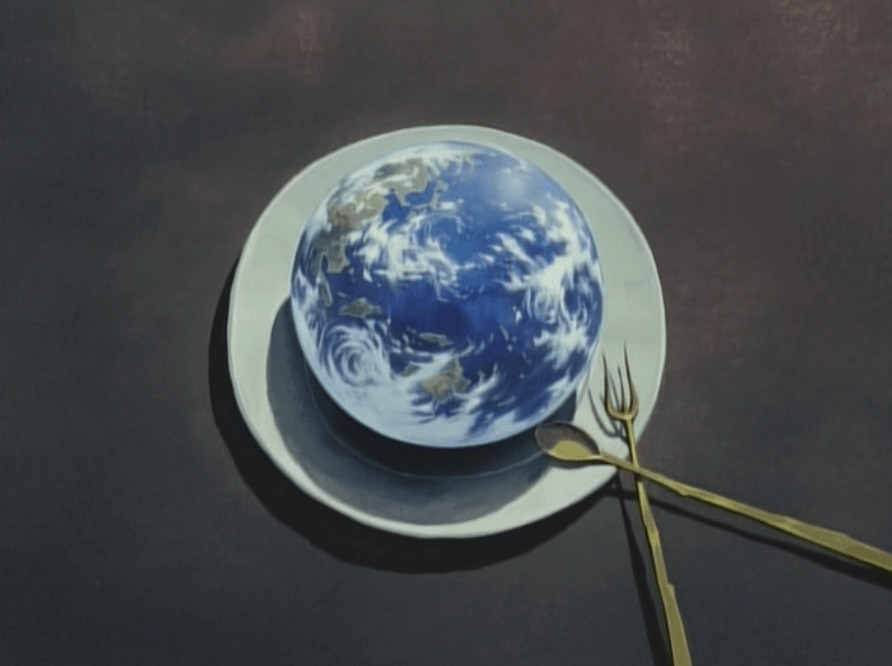 Cat Soup Planet Earth
Cat Soup Planet Earth
Cat Soup evokes a similar artistic sensibility found in works aiming to capture intangible essences, like Girls’ Last Tour or the manga of Dowman Sayman. It’s a piece that might resist definitive statements, perhaps intentionally open to individual interpretation – a “whatever you want it to be” artwork. Yet, it feels more purposeful than that. Perhaps it’s a mood piece attempting to grasp the essence of Nekojiru’s oeuvre and Nekojiru the person, exploring vague notions in the darkness. Or, it could be a direct, unflinching exploration of nihilism. One can only speculate on Nekojiru’s own intended message.
Is there a glimmer of positivity within this bleak narrative? Perhaps. The closing credits, featuring a brief, silent recording of a joyful family moment – a glimpse of happiness never truly experienced within the film’s narrative, now lost forever, endlessly looping to the sound of a music box – offers a potential counterpoint. Maybe Cat Soup serves as a cautionary tale, highlighting the preciousness of the meaningful aspects of life and the importance of cherishing them within our limited control. Life may be absurd and fleeting, making it imperative to make each moment count and value what truly matters.
Regardless of the final message’s interpretation, Cat Soup is a deeply satisfying and unique viewing experience, brimming with layers of meaning. It’s highly recommended for anyone with half an hour and a willingness to engage with thought-provoking and unconventional animation.
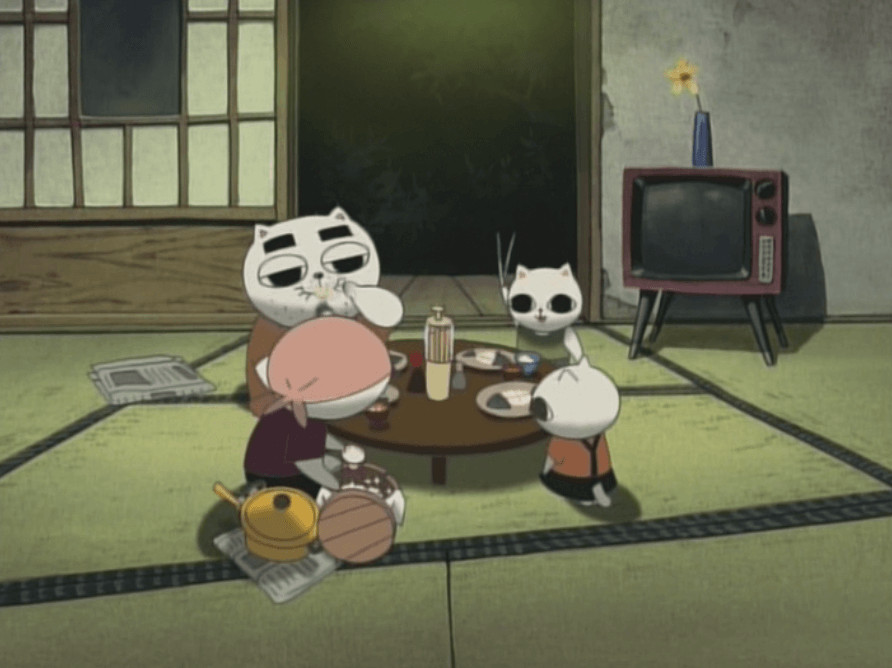 cat-soup-anime
cat-soup-anime
These are just my reflections on Cat Soup. I hope they offer some insight and encourage you to experience this remarkable anime for yourself and to, perhaps, make the most of your own lives.
